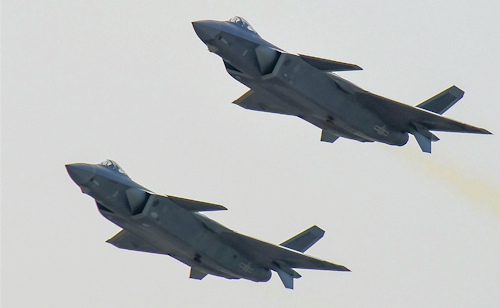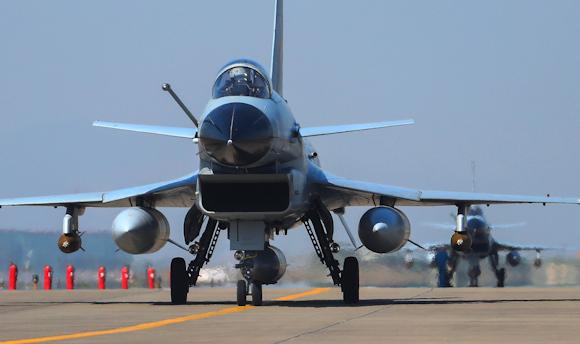The Chinese PLAAF deployed its J-10C, J-16 and J-20 aircraft, which entered service in 2018, 2013 and 2017 respectively, in a joint exercise to demonstrate their high degree of mutual complementarity. The PLAAF strongly supports the theory of creating synergies between three different types of airplanes, already in 2018 it had conducted a similar exercise with other aircraft, with the aim of addressing the challenges of the region.
The J-20 Mighty Dragon is a 5th generation air superiority heavy fighter with capability stealth active. To the Mighty Dragon flanked by the heavy twin-engine 4th ++ generation J-16, an aircraft optimized for ground attack, but with good air combat capabilities thanks to AESA radar, reduced radar traceability thanks to the use of composite materials and paint absorbent radar, good maneuverability and ability to be armed with long-range air-to-air missiles PL-15 e PL-21 with the role of AWACS and Tanker killer. The J-16 is currently in development with the J-16D version optimized for electronic warfare in response to the US EA-18G Growler. Finally, the J-10C Vigorous Dragon is a light single-seat fighter, considered 4th ++ generation, also equipped with AESA radar, modern electronic warfare systems, technical devices for reducing the radar trace and is equipped with an adjustable flow nozzle coupled to an engine WS-10A, the same mounted on the J-16, which give it a high degree of maneuverability. This multi-role aircraft, compared to the previous two, has a lower war load, a less performing radar and a lower autonomy, but thanks to its varied arsenal, the little and easy maintenance that guarantee a high rate of operation make the J- 10C a good support aircraft.
 In the packs of missions usually composed of five planes he saw the presence of a pair of J-20s, which were assigned the task of detecting and destroying any threats that had approached the formation at great distance, thus allowing two J-16s with the task of attacking with precision weapons (LT-2 e LS-6) the objectives designated by the pod YINGS-III, while the single J-10C operated in support of the J-16 in ground attacks with the possibility of disengaging to support the J-20 in air combat.
In the packs of missions usually composed of five planes he saw the presence of a pair of J-20s, which were assigned the task of detecting and destroying any threats that had approached the formation at great distance, thus allowing two J-16s with the task of attacking with precision weapons (LT-2 e LS-6) the objectives designated by the pod YINGS-III, while the single J-10C operated in support of the J-16 in ground attacks with the possibility of disengaging to support the J-20 in air combat.
Some profiles of the missions carried out by "Three Sky MusketeersThey saw a first air-to-air scenario in which the J-16s, equipped with greater radar visibility, acted as bait to the attackers and then lead them into the trap of the more stealthy J-20s and J-10Cs. A more complex scenario, aimed at simulating a real war in the Pacific, saw the J-20 in search and destroy mode of enemy defenses of high strategic value such as AWACS or Thoughts, the J-16s operating on missions Suppression of ENEMY Air Defenses under the protection from possible attacks of the J-10C that in case of real comparison would face the F-15C Eagle and F / A 18E Super Hornet.
In addition to the aforementioned aircraft, the PLAAF will soon see the entry into service of the J-11D, to which most of the technologies already present on the J-16 have been transferred, in particular the AESA radar, the IRST, stealth devices. These technologies are also used on the naval derivative of the J-11, the J-15 flying shark which will enter service at the PLAN in the J-15B version, followed by the embarked electronic warfare version J-15D still under development.
Photo: MoD People's Republic of China / AP












